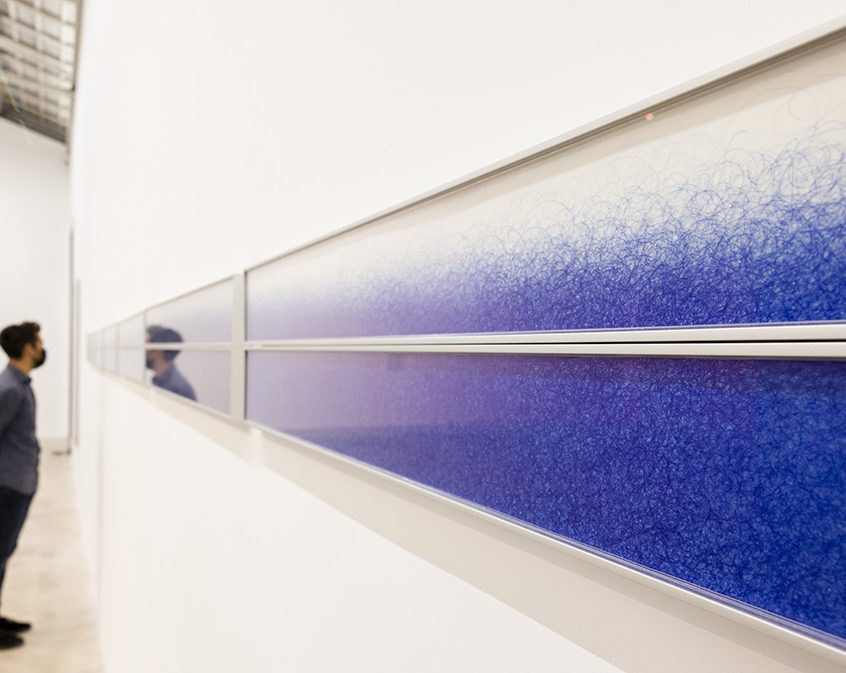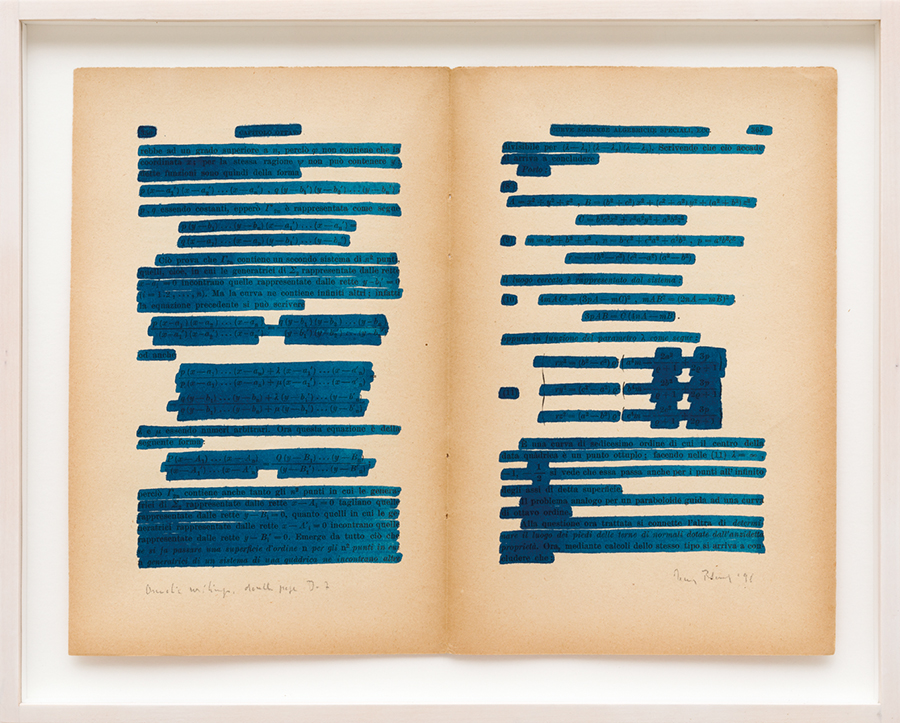Irma Blank, Radical Writings, Exercitium, 1990, acrylic on card
Irma Blank wanted to investigate the 'Urzeichen', or what she regarded as "the primordial, undifferentiated sign that precedes the word". She decided to return to the 'Ursprun', or pure act of writing, a primeval communicative force that denuded writing of sense in order to charge it, like a battery, with pure latent energy, or at least this was my own reading of what she was trying to do. It was an idea that allowed me to drop the concept of 'sense' in terms of words and replace it with sense in terms of energy potential.
She put it like this; 'I save writing from its enslavement to sense, by performing writing purified of sense. I return to the zero point, the semantic zero, the semantic void: silence as a germinating source'. She also stated that, 'Writing is not linked to knowing, but to being'. Irma Blank, Milan, 2001 (Accessed from: http://www.p420.it/en/artisti/blank-irma)
As she drew she would make sounds. She often worked at night, the sounds made by moving mark making materials across and on to various paper surfaces were vital to her understanding of what she was doing. Her breathing creating a rhythm that worked alongside the sounds of moving markers, a situation that would then trigger more sounds that began to float into the spaces between the mark signs and the breath rhythm, sounds that would become 'songs' of praise hymned to the silence of the night.
She would make transcriptions of writings. Trying to reduce existing texts back into the mark sounds that they emerged from. For instance she might take a philosophical text, lay over it transparent paper so that she could see the typographic layout of the original as well as be able to read it through the translucent surface of her drawing paper. Then she would read the text silently, gradually beginning to murmur or hum the sound rhythm that began to inhabit her mind/throat/mouth, and with her hand begin making hatching marks that set themselves off against the sound rhythm now developing as she read the text in her head. The cycle Trascrizioni, (1973-1979), being transcriptions of black ink on transparent paper of printed materials such as newspapers, philosophical treatises and poetry. She has also recorded herself at work, which is why we know how she operates. Her practice is a sensory cycle; sight, hearing and touch interact with each other. Since 1979 she has been undertaking actions and reading performances.
Irma Blank talks about her work
There are always new or alternative ways to think about something. I have always hummed and made noises as I draw. Students have in the past been surprised that I might begin making humming or even barking sounds in order to 'explain' the communicative effect of a particular drawing or set of marks within a drawing. Blank has helped me to think more deeply about this and I have perhaps not thought through the implications as far as I should have done. As I rethink this aspect of drawing I'm more aware of energy conversion, transformation and translation because of my recent work on the visualisation of invisible perceptual experiences, therefore the keeping separate visual from aural, olfactory or tactile experiences would appear to be a more and more foolish exercise. Trying to record the spectrum and flow of perceptual experience is more like attempting to draw the sea. At one moment it is a giant beast of a thing that can shape continents and at another it is home to the most fragile swimming creature.
See also:
Is drawing a language? Part three Includes a diagram of synesthesia





No comments:
Post a Comment